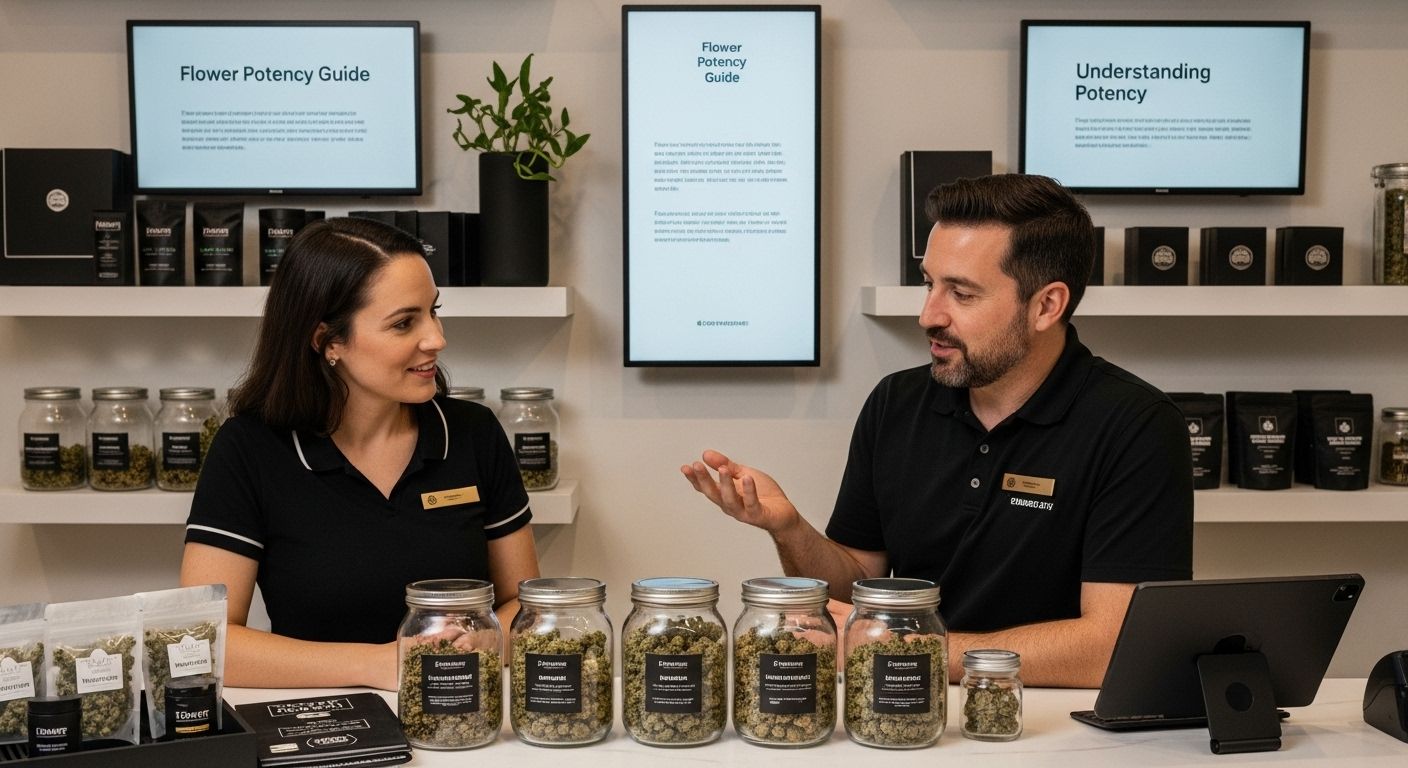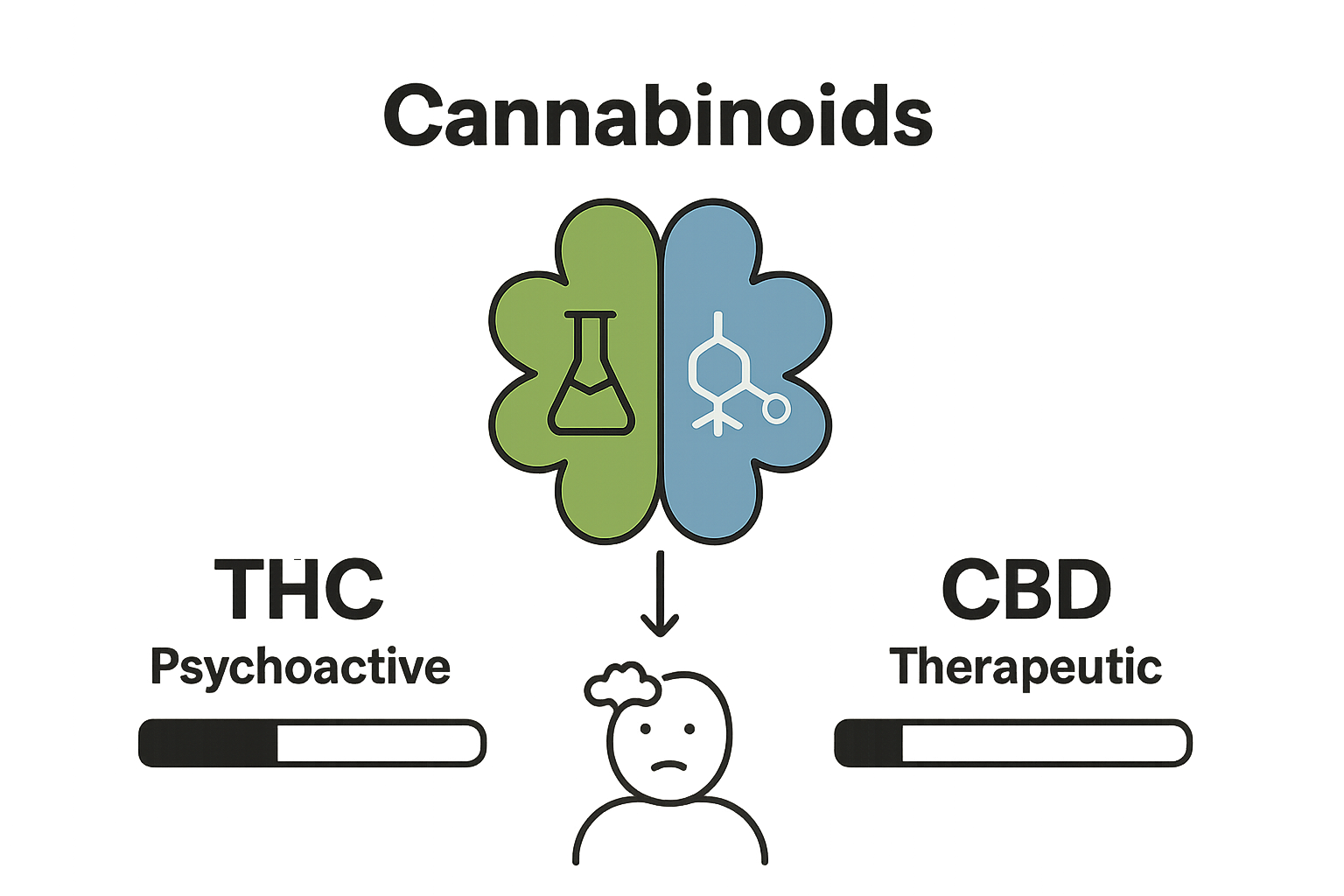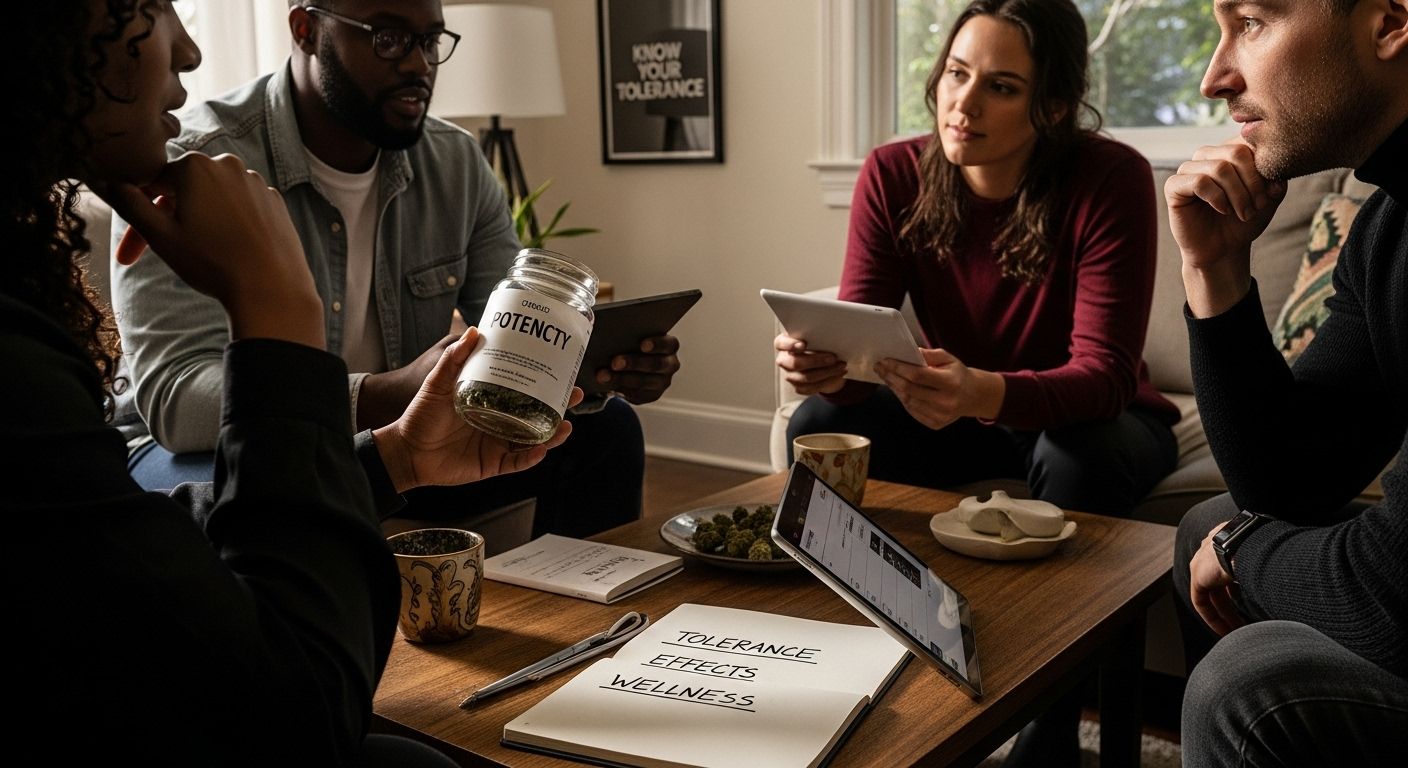Understanding Cannabis Flower Potency Guide
Written by California Blendz

Cannabis flower potency is getting more attention than ever, especially with THC levels in some modern strains now reaching over 30 percent. Most people think high potency always means a stronger or better experience. That idea misses the bigger picture because the real secret is how all the different cannabinoids and terpenes work together to shape what you feel, not just the THC number on a label.

Table of Contents
- What Is Cannabis Flower Potency And Why It Matters?
- The Role Of Cannabinoids In Determining Potency
- Understanding THC, CBD, And Other Cannabinoids
- Factors Influencing Cannabis Flower Potency
- Practical Applications Of Knowing Cannabis Potency
Quick Summary
| Takeaway | Explanation |
|---|---|
| Cannabis potency determines effects. | Understanding potency allows consumers to predict the experience, from relaxation to psychoactivity. |
| THC and CBD are key cannabinoids. | THC causes psychoactive effects while CBD offers therapeutic benefits, shaping user experiences. |
| Environmental factors impact potency. | Variables like genetics, cultivation conditions, and postharvest processing significantly affect cannabinoid concentrations. |
| Know your tolerance for safety. | Personal tolerance influences how cannabis affects individuals, helping to prevent overconsumption. |
| Educate for responsible use. | Being informed about potency supports tailored recreational and therapeutic cannabis consumption. |
What is Cannabis Flower Potency and Why It Matters?
Cannabis flower potency represents the concentration of active cannabinoids, primarily THC and CBD, within the cannabis plant material. Understanding potency is crucial for consumers seeking specific effects, dosage management, and overall wellness considerations.
Chemical Composition and Measurement
Potency measures the percentage of cannabinoids present in dried cannabis flower. THC (tetrahydrocannabinol) and CBD (cannabidiol) are the primary compounds determining a flower’s strength and potential impact. Research from the National Institutes of Health indicates that higher THC concentrations can significantly influence user experience and potential physiological responses.
Key aspects of cannabis flower potency include:
- Percentage of total cannabinoid content
- Ratio between THC and CBD
- Terpene profile influencing overall effect
Importance of Understanding Potency
Knowing cannabis flower potency helps consumers make informed decisions about consumption. Different potency levels can produce varied effects, ranging from mild relaxation to intense psychoactive experiences. Check out our comprehensive guide on understanding THC content for more in-depth insights.
Consumers should consider potency for several critical reasons:
- Personal tolerance levels
- Desired therapeutic or recreational outcomes
- Potential health and safety considerations
Modern cannabis strains have substantially increased in potency over recent decades, making precise understanding more important than ever for responsible consumption.
The Role of Cannabinoids in Determining Potency
Cannabinoids are complex chemical compounds found in cannabis plants that play a critical role in determining the overall potency and potential effects of cannabis flower. These unique molecular structures interact with the human endocannabinoid system, creating diverse physiological and psychological responses.
Primary Cannabinoids and Their Characteristics
Research from the National Institutes of Health highlights the significance of different cannabinoids in defining cannabis potency. Two primary cannabinoids dominate this conversation: THC (tetrahydrocannabinol) and CBD (cannabidiol).
Key characteristics of primary cannabinoids include:

- THC: Responsible for psychoactive effects
- CBD: Non-psychoactive with potential therapeutic benefits
- CBN: Mildly psychoactive, typically formed through THC degradation
Interaction and Synergistic Effects
Cannabinoids do not work in isolation but interact through a phenomenon known as the entourage effect. This complex interaction means that the total potency is not just about individual cannabinoid percentages, but how they complement and modify each other’s impact. Learn more about the intricacies of cannabinoid interactions to understand this nuanced relationship.
Factors influencing cannabinoid potency include:
- Genetic strain of the cannabis plant
- Growing conditions and cultivation techniques
- Harvesting and curing processes
- Storage methods and environmental exposure
Understanding these interactions provides consumers with a more sophisticated approach to selecting cannabis flower that meets their specific wellness or recreational objectives.
Understanding THC, CBD, and Other Cannabinoids
Cannabinoids represent a diverse family of chemical compounds found in cannabis plants, each with unique properties and potential effects on the human body. Understanding their distinct characteristics helps consumers make informed choices about cannabis consumption.
Major Cannabinoids Explained
Research from the National Institutes of Health reveals the complex interactions and individual profiles of primary cannabinoids. Two most prominent cannabinoids are THC and CBD, which have distinctly different impacts on human physiology.
Key characteristics of primary cannabinoids include:
- THC (Tetrahydrocannabinol): Primarily responsible for psychoactive effects
- CBD (Cannabidiol): Non psychoactive with potential therapeutic applications
- CBN (Cannabinol): Mildly psychoactive, typically resulting from THC degradation
Emerging and Minor Cannabinoids
Beyond THC and CBD, several lesser known cannabinoids are gaining research attention. Explore the nuanced differences between THC variants to understand the broader cannabinoid landscape.
Emerging cannabinoids with potential significance include:
- CBG (Cannabigerol): Potential anti inflammatory properties
- CBC (Cannabichromene): Possible neuroprotective characteristics
- Delta 8 THC: Milder psychoactive experience compared to traditional THC
The intricate interplay between these compounds demonstrates that cannabis potency extends far beyond simple THC percentage measurements, encompassing a complex molecular ecosystem that influences overall user experience.
To help readers quickly compare the major cannabinoids and understand their unique characteristics, the following table organizes the key properties discussed in the article.
| Cannabinoid | Psychoactive? | Main Effects | Notable Features |
|---|---|---|---|
| THC | Yes | Euphoria, altered perception, relaxation | Primary driver of psychoactivity |
| CBD | No | Calming, potential therapeutic benefits | May counteract some THC effects |
| CBN | Mild | Sedation, slight psychoactivity | Formed by THC degradation |
| CBG | No | Possible anti-inflammatory effects | Considered an emerging cannabinoid |
| CBC | No | Possible neuroprotective properties | Less common, still under study |
| Delta 8 THC | Yes (milder) | Milder psychoactive experience | Less potent than standard THC |
Factors Influencing Cannabis Flower Potency
Cannabis flower potency is not a static characteristic but a dynamic result of multiple interrelated factors. Understanding these variables helps consumers and cultivators comprehend how cannabinoid concentrations develop and transform throughout a plant’s lifecycle.
Genetic and Environmental Influences
Research from scientific literature demonstrates that cannabinoid composition results from a complex interaction between genetic predisposition and environmental conditions. Cannabis plants possess inherent genetic potential that can be dramatically modified by external factors.
Key genetic and environmental factors include:
- Specific cannabis strain and hereditary characteristics
- Soil nutrient composition
- Temperature and humidity levels
- Exposure to ultraviolet radiation
- Cultivation techniques
Cultivation and Postharvest Processing
The journey from cultivation to consumption involves critical stages that significantly impact cannabinoid potency. Learn more about preserving cannabis flower quality to understand the nuanced process of maintaining optimal potency.
Crucial processing factors affecting potency include:
- Harvesting timing and technique
- Drying and curing methods
- Storage conditions
- Light and temperature exposure
- Duration between harvest and consumption
Potency is not solely determined by THC percentage but represents a sophisticated interplay of biological, environmental, and human intervention factors that collectively shape the final cannabinoid profile of cannabis flower.
The following table summarizes the primary factors influencing cannabis flower potency, organizing the genetic, environmental, and processing variables mentioned in the article for easy review.
| Factor Category | Specific Influences | Role in Potency Development |
|---|---|---|
| Genetics | Cannabis strain, hereditary traits | Sets potential cannabinoid and terpene content |
| Environment | Soil nutrients, temperature, humidity, UV exposure | Modifies plant expression of cannabinoids and terpenes |
| Cultivation Techniques | Growing and harvesting methods | Impacts resin, cannabinoid, and terpene levels |
| Processing | Drying, curing, storage conditions | Preserves or degrades cannabinoid and terpene content |
| Timing | Harvest and storage duration | Alters final potency through degradation or preservation |
Practical Applications of Knowing Cannabis Potency
Understanding cannabis flower potency extends far beyond mere curiosity, offering critical insights for consumers, medical professionals, and wellness enthusiasts seeking targeted and safe cannabis experiences.
Medical and Therapeutic Considerations
Research from the National Institute on Drug Abuse reveals the significant implications of potency awareness in medical and therapeutic contexts. Precise cannabinoid concentration knowledge enables more controlled and predictable therapeutic interventions.
Key medical applications include:
- Tailoring treatment for specific medical conditions
- Managing chronic pain and inflammation
- Addressing anxiety and sleep disorders
- Calculating appropriate dosage for individual patient needs
- Minimizing potential adverse psychological effects
Recreational and Personal Wellness Strategies
For recreational users and wellness seekers, understanding potency provides a foundation for responsible and intentional consumption. Learn more about navigating THC content to make informed choices about your cannabis experience.
Practical recreational considerations involve:
- Selecting appropriate strains for desired effects
- Managing personal tolerance levels
- Preventing overconsumption
- Understanding potential psychoactive experiences
- Ensuring safe and enjoyable cannabis interactions
Potency knowledge empowers consumers to transform cannabis from a generic product into a personalized wellness tool, bridging the gap between recreational enjoyment and targeted therapeutic intervention.

Take Control of Your Cannabis Experience with Trusted Potency
If understanding cannabis flower potency feels overwhelming, you are not alone. Many people struggle to find products that match their desired effects, tolerance, and comfort level. You read about THC percentages, CBD ratios, and the importance of lab testing, but finding a source that delivers both information and quality can be challenging. At California Blendz, we address these pain points with a range of premium options and educational resources. Explore the The THCa Prestige Vault to find carefully curated, high-potency THCa flower, each batch third-party tested for cannabinoid content and transparency.

Ready to experience the difference that knowledge and quality can make? Shop with confidence at California Blendz where you can filter by effect or potency, view lab results, and select from organic flowers grown in the Emerald Triangle. Discover your ideal product and take the next step in your wellness journey. Visit the The CBD Flower Collection for premium picks, or head to our homepage to shop the entire selection now.
Frequently Asked Questions
What is cannabis flower potency?
Cannabis flower potency refers to the concentration of active cannabinoids, primarily THC and CBD, in the cannabis plant material. It is measured as a percentage of total cannabinoid content and is crucial for understanding the effects of cannabis.
How does THC affect cannabis potency?
THC (tetrahydrocannabinol) is the primary psychoactive compound in cannabis. Higher concentrations of THC typically result in stronger psychoactive effects, which can significantly influence the user’s overall experience.
Why is it important to know the CBD content in cannabis?
Knowing the CBD (cannabidiol) content in cannabis is essential for consumers seeking therapeutic benefits without the psychoactive effects of THC. Products with higher CBD may provide relief from conditions like anxiety and chronic pain without causing intoxication.
What factors influence the potency of cannabis flower?
Cannabis flower potency is influenced by several factors, including the genetic strain of the plant, growing conditions (like soil and climate), cultivation techniques, harvesting methods, and postharvest processing, such as drying and curing.








